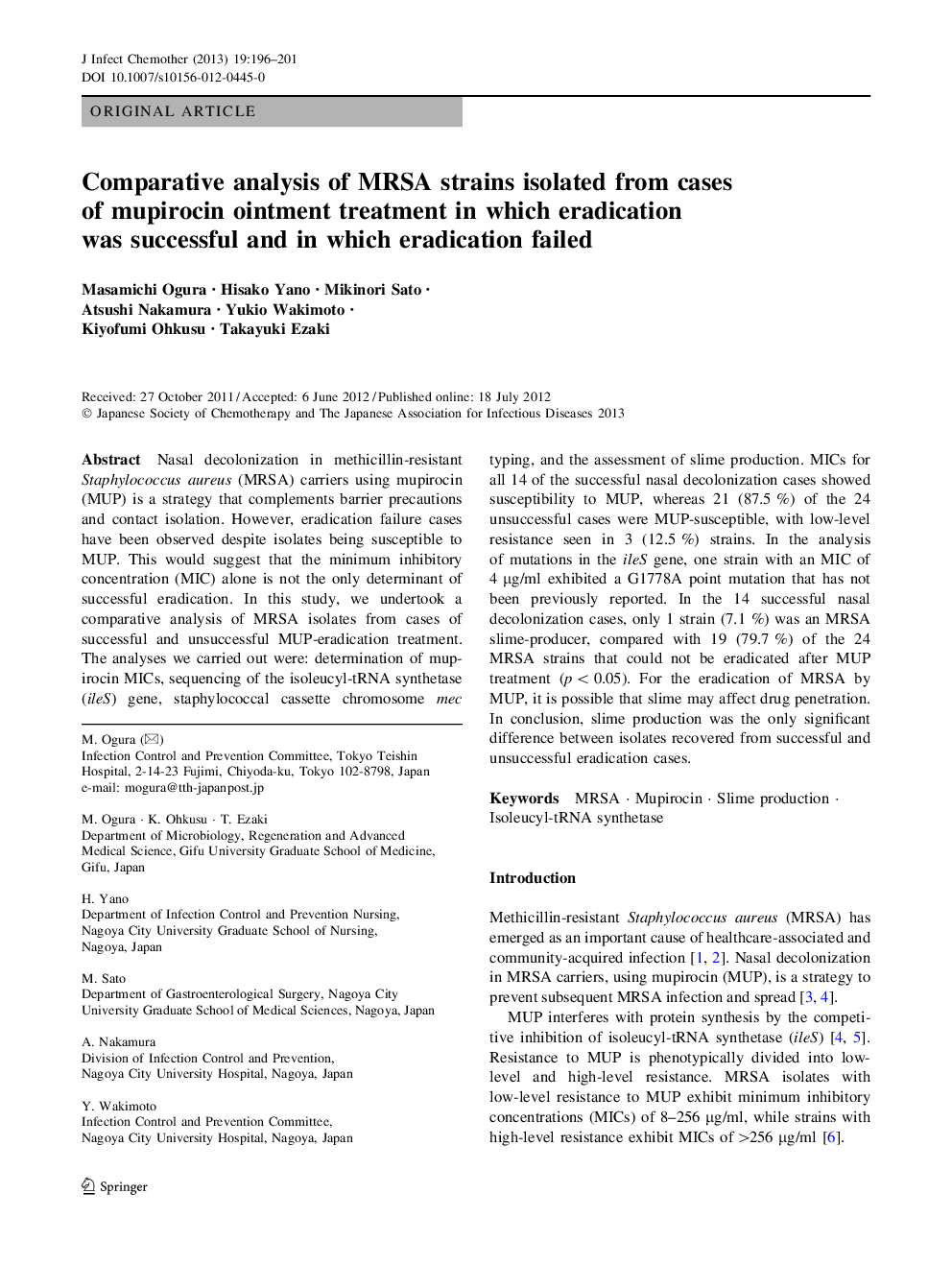| Article ID | Journal | Published Year | Pages | File Type |
|---|---|---|---|---|
| 3377067 | Journal of Infection and Chemotherapy | 2013 | 6 Pages |
Nasal decolonization in methicillin-resistant Staphylococcus aureus (MRSA) carriers using mupirocin (MUP) is a strategy that complements barrier precautions and contact isolation. However, eradication failure cases have been observed despite isolates being susceptible to MUP. This would suggest that the minimum inhibitory concentration (MIC) alone is not the only determinant of successful eradication. In this study, we undertook a comparative analysis of MRSA isolates from cases of successful and unsuccessful MUP-eradication treatment. The analyses we carried out were: determination of mupirocin MICs, sequencing of the isoleucyl-tRNA synthetase (ileS) gene, staphylococcal cassette chromosome mec typing, and the assessment of slime production. MICs for all 14 of the successful nasal decolonization cases showed susceptibility to MUP, whereas 21 (87.5 %) of the 24 unsuccessful cases were MUP-susceptible, with low-level resistance seen in 3 (12.5 %) strains. In the analysis of mutations in the ileS gene, one strain with an MIC of 4 μg/ml exhibited a G1778A point mutation that has not been previously reported. In the 14 successful nasal decolonization cases, only 1 strain (7.1 %) was an MRSA slime-producer, compared with 19 (79.7 %) of the 24 MRSA strains that could not be eradicated after MUP treatment (p < 0.05). For the eradication of MRSA by MUP, it is possible that slime may affect drug penetration. In conclusion, slime production was the only significant difference between isolates recovered from successful and unsuccessful eradication cases.
